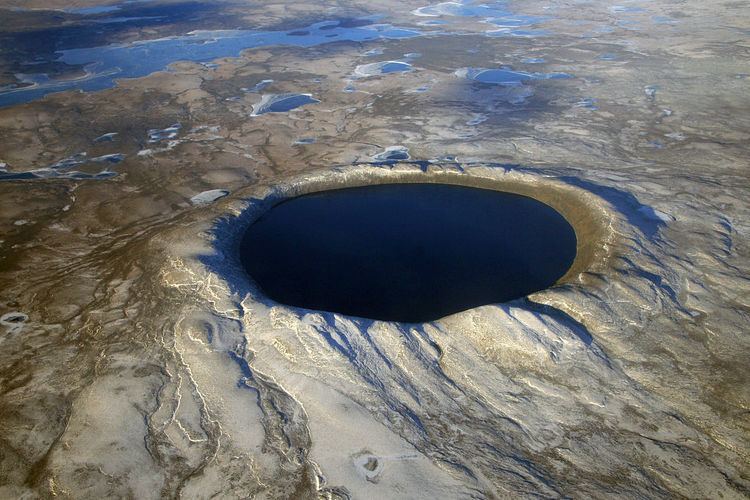 | ||
The Maniitsoq structure is a 100 km (62 mi) wide circular region with unusual geological features believed to be the results of a massive asteroid or comet impact about three billion years ago. The region is centered about 55 km (34 mi) south-east of the town of Maniitsoq, Greenland, at coordinates 65°15′N 51°50′W.
During the 3 billion years following the impact, the crater has eroded down, and the features now exposed were buried 20 to 25 km (12 to 16 mi) below the surface at the time the event occurred. This erosion processes is the reason that very few remaining craters are visible on Earth.
According to a study published in 2012, scientist believe that it is an impact structure created by a single event involving intense crushing and heating, rather than a deformation in the earth's crust formed by the interaction of tectonic plates. According to the study, the inferred scale, strain rates and temperatures necessary to create the Maniitsoq structure rule out a terrestrial origin.
More research is needed before the Maniitsoq structure can be definitely confirmed as an impact crater because present diagnostic tools used to identify impacting in the upper crust are inadequate for giant, deeply eroded structures. If confirmed as an impact crater, this crater would be older than other old impact craters such as the much smaller 16 km (10 mi) wide, 2.4 billion year old, Suavjärvi crater in Russia and the larger 300 km (186 mi) wide, 2.0 billion year old, Vredefort crater in South Africa.
The 2012 study was published by scientists from the Geological Survey of Denmark and Greenland (GEUS), along with members from Cardiff University, Lund University in Sweden, and the Institute of Planetary Science in Moscow.
